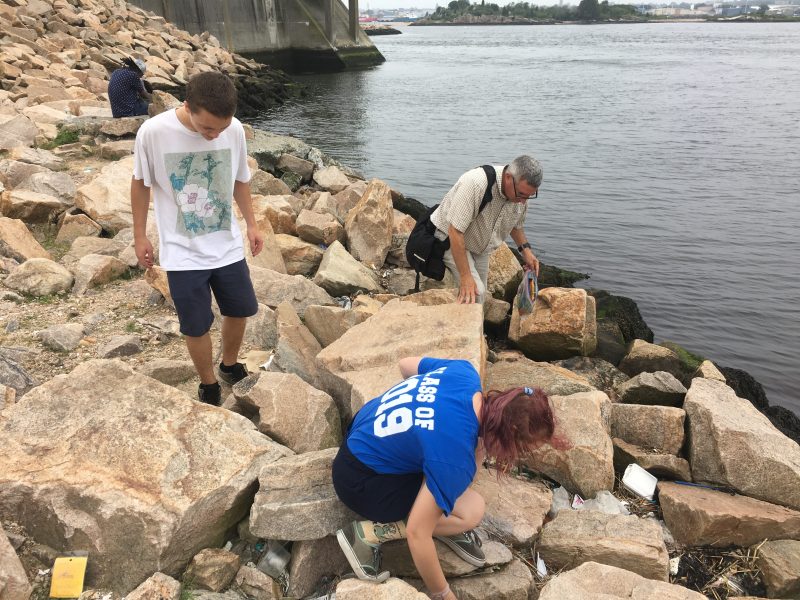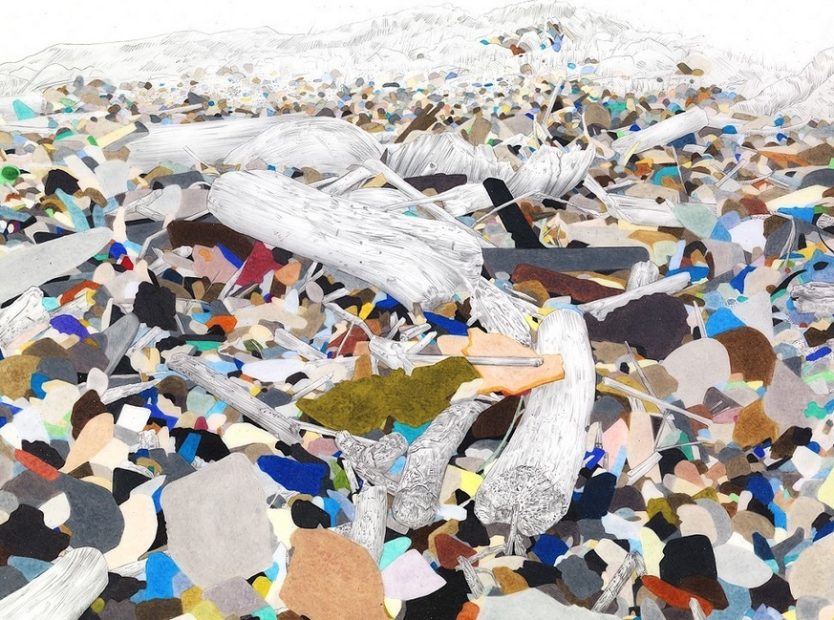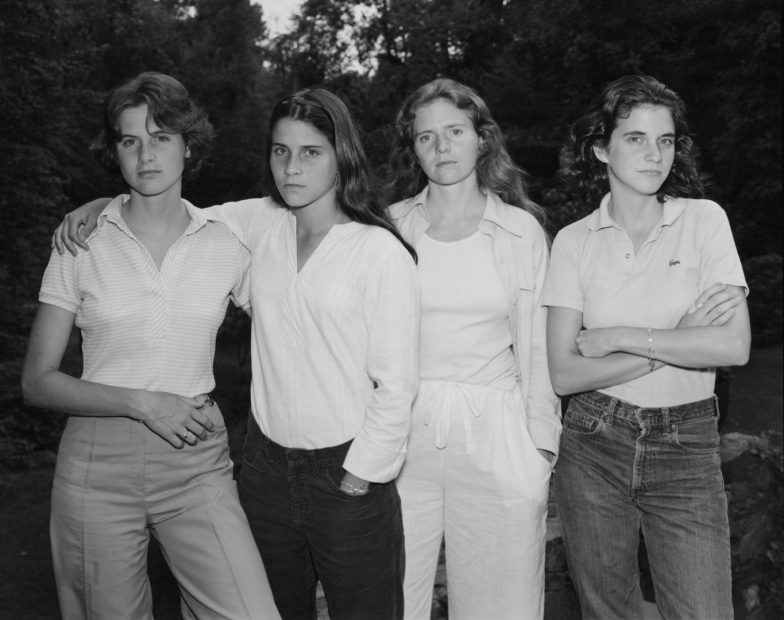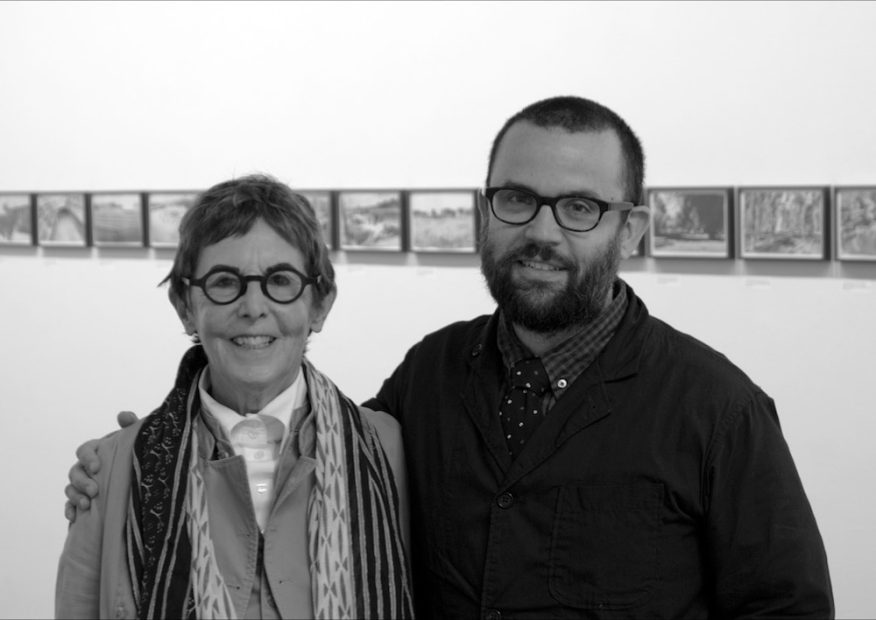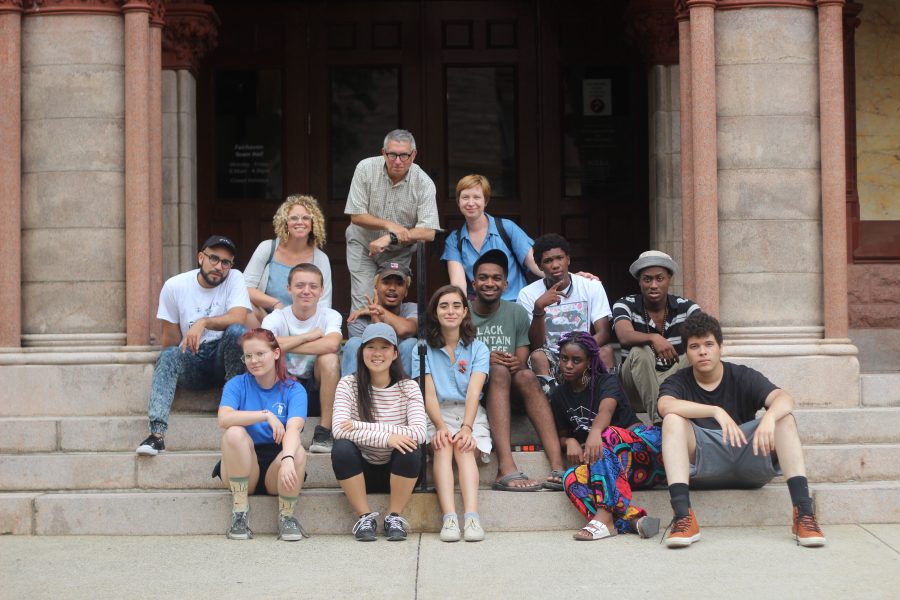
Annual Fashion-Themed Event Includes Looks From Baja East’s S18 Collection and Designs from ICA Teens
On Oct. 6, the Institute of Contemporary Art/Boston (ICA) celebrates Boston Fashion Week with a special fashion-focused edition of First Fridays, featuring brand Baja East and the Boston-based concept store All Too Human. The museum’s annual fashion-themed First Fridays will showcase looks from Baja East’s Spring 2018 collection, which debuted only weeks earlier in New York and Paris. Baja East designers John Targon and Scott Studenberg will be at the ICA to discuss their practice, inspiration, and journey as artists and designers in a series of mini conversations. The designers have invited NY-based DJ—and fashion-world favorite—Mike Nouveau to perform at the event.
The First Fridays event will also launch a unique collaboration between Baja East and the ICA Teen Arts Council—a co-designed, custom sweatshirt to be sold exclusively at All Too Human and the ICA Store. During the evening event, the collaborative sweatshirt will be sold alongside other Baja East products, with proceeds going to the ICA’s Teen Arts Education Program.
The collaboration marks the start of Baja East and All Too Human’s BE UNITED campaign, which seeks to create a positive social platform through art and fashion to celebrate, learn about, and respect our shared experiences. “Given what’s going on in the world today, from gender and race inequality, to Hurricane Harvey, the lens that youth are growing up in can appear dismal. BE UNITED is a social initiative to address these things in a way that is timely, relevant, impactful and inspiring,” said Targon, founder and creative director of Baja East.
EVENT DETAILS
When and Where
Friday, October 6
5-10 PM at the ICA (25 Harbor Shore Drive, Boston, MA 02210)
About Baja East
LOOSE LUXURY – a new kind of fashion and lifestyle concept pioneered by Baja East, the globally inspired luxury brand based in New York City, established in October, 2013 by Scott Studenberg and John Targon. Embodying a “go anywhere” attitude, the duo combines west coast laid-back cool with a city street edge in pieces that are as elegant as they are effortless. The brand built a name for itself effortlessly blurring the lines between men’s and women’s with its core concept of ambisexual dressing that continues to thrive. Over the course of 15 seasons they have developed new layers of red- carpet-ready to off-duty dressing, specifically targeted to women. Baja East is coveted on and off the red carpet by celebrities like Kim Kardashian, Lady Gaga, and Gigi Hadid.
About All Too Human
ALL TOO HUMAN is an experiential fashion and lifestyle boutique for both men and women with exceptional local and international fashion design as its focus, selling only the most interesting and current collections from a blend of emerging and stand out brands. ALL TOO HUMAN also acts as a show space for various creative mediums such as Home Furnishings, art and events. “With fashion at as our core, ALL TOO HUMAN seeks to push the limits of creative engagement and expressionism through collaboration, installations and special programming,” states Jessica Knez, Owner of ALL TOO HUMAN. “We’re a creative space, and believe in the distinct overlap between art and fashion. ALL TOO HUMAN is always discovering, encouraging and promoting partnerships between artists and designers, in all forms.”
About the ICA
An influential forum for multi-disciplinary arts, the Institute of Contemporary Art/Boston has been at the leading edge of art in Boston for 80 years. Like its iconic building on Boston’s waterfront, the ICA offers new ways of engaging with the world around us. Its exhibitions and programs provide access to contemporary art, artists, and the creative process, inviting audiences of all ages and backgrounds to participate in the excitement of new art and ideas. The ICA, located at 25 Harbor Shore Drive, is open Tuesday and Wednesday, 10 AM–5 PM; Thursday and Friday, 10 AM–9 PM (1st Friday of every month, 10 AM–5 PM); and Saturday and Sunday, 10 AM–5 PM. Admission is $15 adults, $13 seniors and $10 students, and free for members and children 17 and under. Free admission for families at ICA Play Dates (2 adults + children 12 and under) on last Saturday of the month. For more information, call 617-478-3100 or visit our website at www.icaboston.org. Follow the ICA on Facebook, Twitter, and Instagram.
